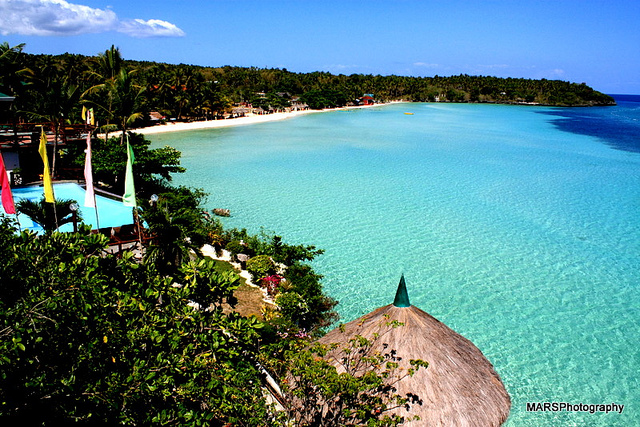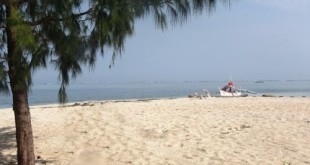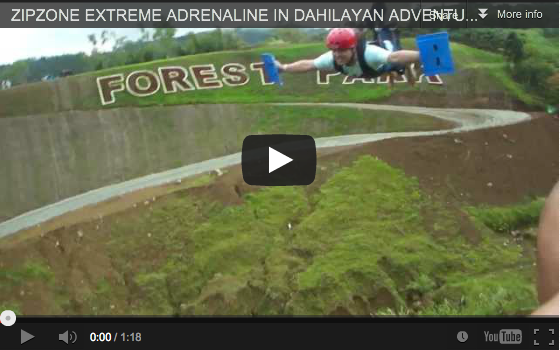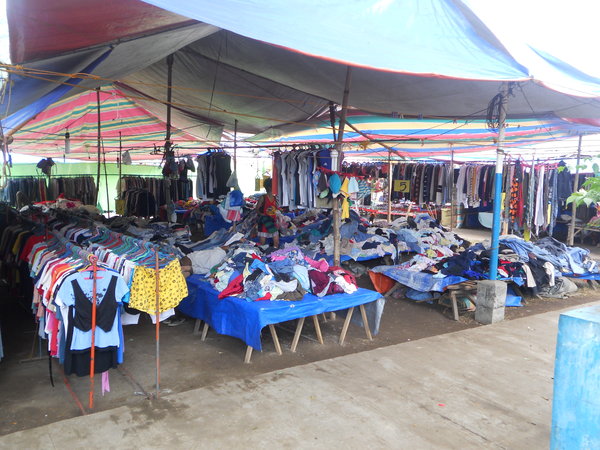Simply because it’s the height of tropical cyclone season doesn’t mean you can’t hit the beach for a well-deserved break from the monsoons. Even better, this time of the year is off-season, so you are likely to get cheaper lodging, better service, and fewer crowds. If you are truly lucky, you can even get the beach all to yourself, with only an odd heron scouring the shore for stray crabs.
But with plenty of choices, where do you begin?
One look at the Philippine map and you can see that there are scattered islands in the central part of the country. This is the Visayas, home of the Philippine beach capital Boracay, and a host of gorgeous others.
To get started, book a flight to Bacolod, Negros island’s capital, or Iloilo City, Panay island’s capital, and beach-bum in all direction. Both islands have plenty of coastal towns that not only teem with seafood, but more important – at least for beachgoers – blue waters and white sands. Here are the most well-loved – although not all of them are well-known – beaches of the Visayas.
(Photo by mootown)
Negros Occidental
Touted as the Sugar Bowl of the Philippines because of its vast sugarcane lands, Negros is sweeter than its primary crop, especially when it comes to beaches. Northern Negros, otherwise famous for its sugar mills, Spanish-era mansions and ruins, and a “hacienda” (sugar plantations) way of life boasts of Jomabo Island, Lakawon and Carbin Reef. More white sand awaits at Cauayan’s Punta Bulata, peaks at Sipalay’s Punta Ballo and Campomanes Bay, and then tapers off at Hinoba-an’s Pitogo Island.
The beaches here are ideal for scuba-diving, as the shore typically slopes abruptly a short distance from the tide line. Danjuagan Island, once an exclusive biosphere reserve, has now opened its doors to the public who can afford its $40 fee for daytime excursion. Pitogo Island also bills itself as an exclusive resort, for even locals can no longer cross from the mainland to this gem of a rock in the middle of Nabulao Bay without prior reservation.
Negros Oriental
From Negros Occidental’s Hinobaan, you cross over the imaginary line that separates it from Negros Oriental at the “heel” of Negros. From a beach bum’s point of view, there’s not much difference because the expanse of Sulu Sea yields more secrets in terms of white sand beaches.
Apo Island off the coast of Dauin and Zamboanguita is a marine reserve, so CLAYGO (clean as you go) policy is strictly enforced. As you round the heel of Negros, you touch base with the most American of all Negros cities, Dumaguete. From here on north, there’s Manjuyod and its famous sandbar. The whale sharks of Oslob are just 20 minutes north across Negros Oriental’s Sibulan via ferry.
Cebu

Most people consider Cebu as Manila without its headache-inducing traffic. It’s actually the second largest city in the Philippines, and the economic hub of the Visayas. So everything you would want in a metropolis is here. And Cebu has plenty of beaches that people from Manila have fallen in love with again and again. Malapascua, Moalboal and Bantayan Island easily come to mind. Oslob has become famous for its whale sharks, while Camotes Island is alluring for its native beauty and being tucked away.
Bohol
The textbook case of “Chocolate Hills” (karst limestone outcrops that spread for miles and miles around) is also a beach lover’s paradise. The beaches of Panglao Island come to mind first because of sand so white it blinds the unsuspecting and makes the already turquoise waters sparkle even more. Doljo and Alona Beaches are all-season favorites. Swimming here is safe, even at night. If Travel+Leisure were to be believed, it is one of the best secret beaches in the world. (Author’s note: Last time I checked, which was in 2006, Panglao surely bedazzled.)
Siquijor
An hour away from Dumaguete lies Siquijor, in another lifetime known as the sorcery hotspot of the Visayas. Today, it enchants unsuspecting travelers with its “raw” beaches in the town of San Juan. But come here quick before San Juan is overrun with beachfront forest of hotels and facilities that would “ruin” the view. There are already a number of resorts and dive centers here, but the place is still rather desolate. If you want to beach bum with government facilities nearby, the Salagdoong Beach in the town of Maria is worthy of a day trip.
Samar
A few years back, Samar burst to mainstream attention when adolescent boys needed to be rescued from a cave that would eventually known as the gargantuan Calbiga Cave Complex thought to tunnel through the entire province. But beyond the caves also lies another enchanted destination of Calico-an Island that is still raw with the absence of “development.” It’s also an up and coming surf spot.
Leyte
In Philippine history class, Leyte was where Gen. Douglas MacArthur fulfilled his “I shall return” promise. Cruise ship passengers on a Southeast Asian island-hopping tour once stopped over for lunch at Kalanggaman Beach. Many of them have likely sworn that one day, they too, shall return.
Panay
Boracay is located on the northern tip of the Panay island. But even without this dog-bone shaped island that has beguiled many (and disappointed a few), Panay has plenty of beach contenders that could give Boracay a run for its money.
In fact, if development in Sicogon were not halted in the 1970s, the latter would have been the beach capital of the country. Perhaps because they lack the usual tourist infrastructure – bringing a hammock and a tent will not hurt – and are way out of the usual itinerary, Gigantes and Sicogon are way “undeveloped” by Boracay standards. But if you are after having the beach all to yourself, the beaches of Carles will reward you for leaving civilization behind. Close to the Negros Occidental towns of Valladolid and Pulupandan lie the islands of Guimaras which is administratively part of Panay. Guisi Beach has earned quite a following, but there are a handful other beaches in a handful other Guimaras islands that await discovery.


